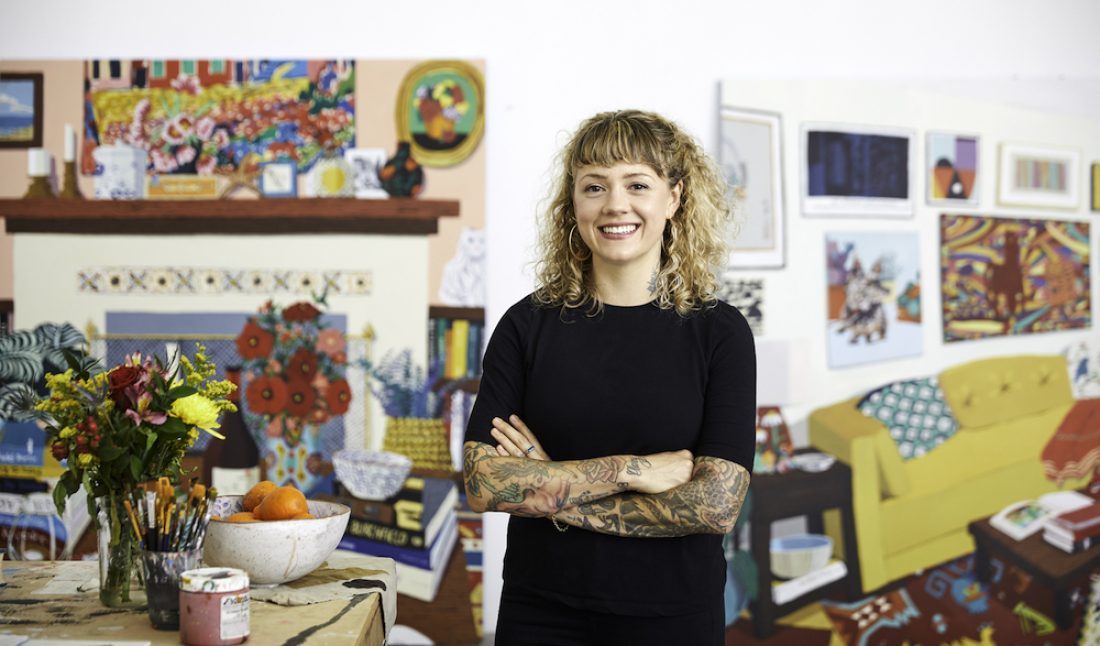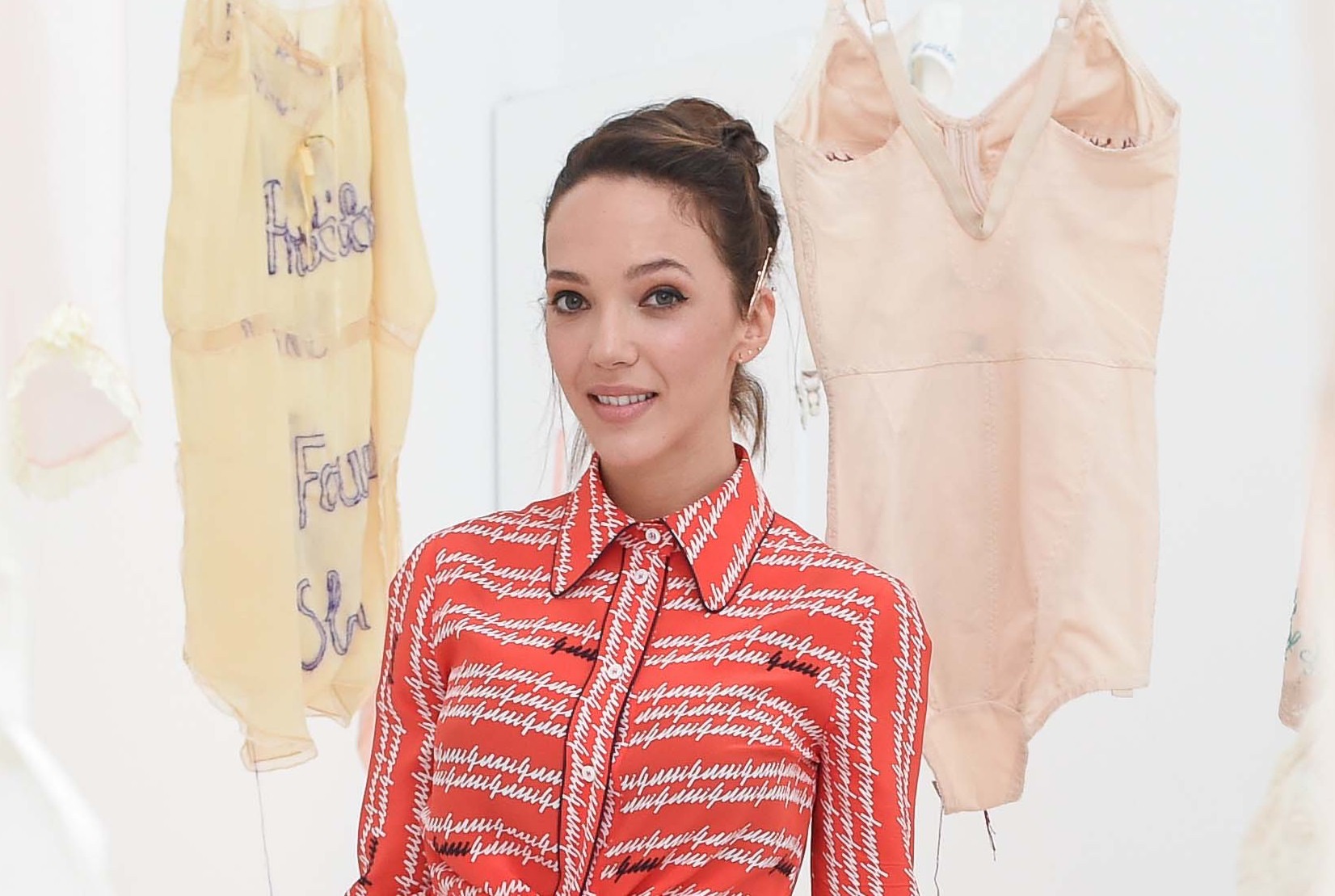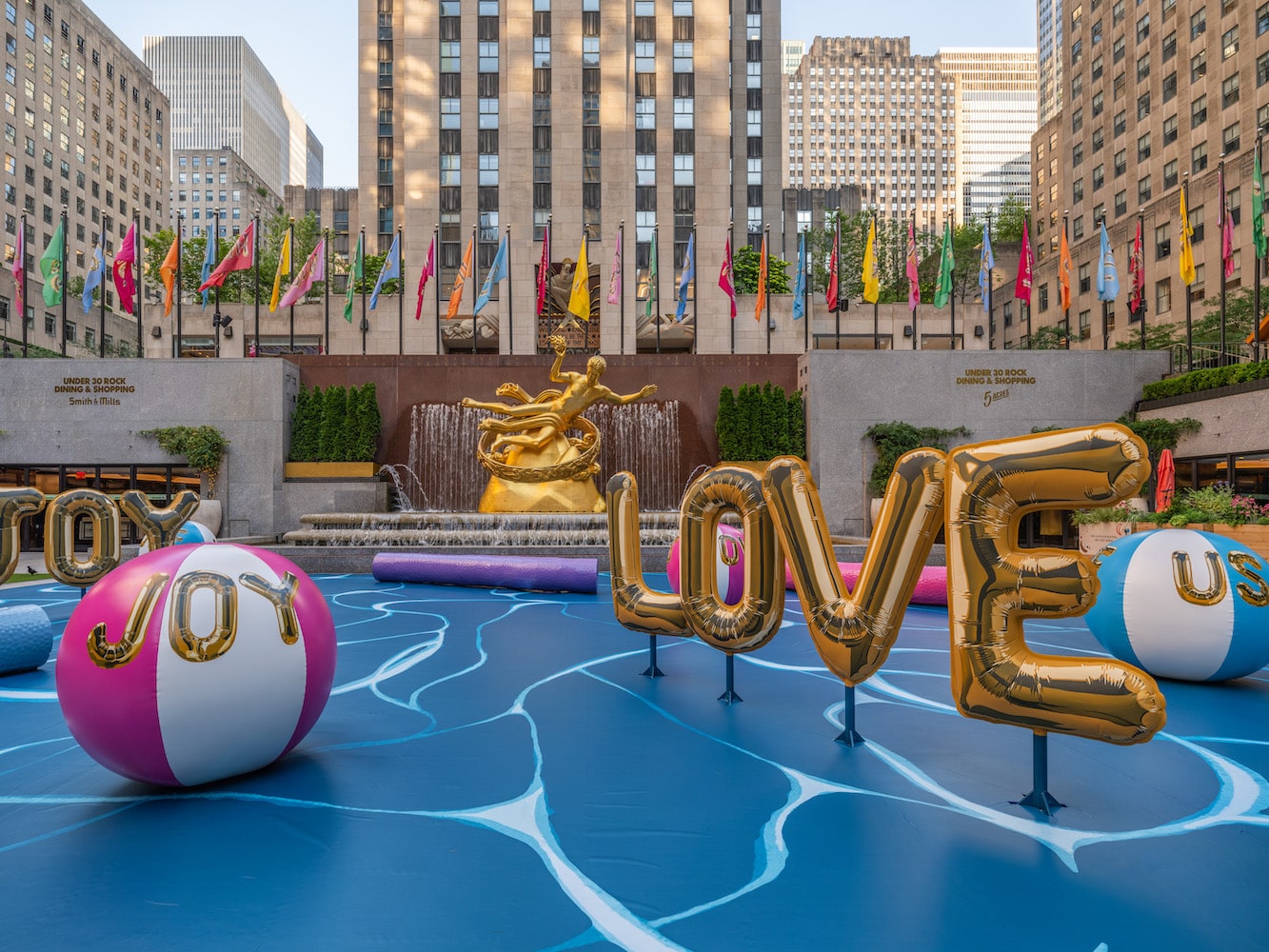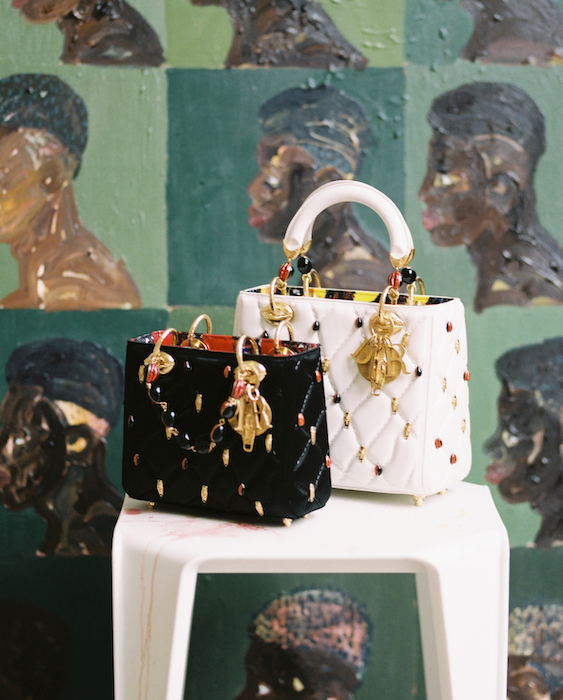The latest edition of Art Production Fund’s “Art in Focus” series features the work of Hilary Pecis, on view now through September 2. Filling the public spaces of Rockefeller Center, the flowers, landscapes, and interiors of the artist’s more intimate paintings and large-scale murals are seen within the vinyl mural spaces, while colorful, multimedia installations incorporating elements like hand-painted fabrics come to life inside the glass vitrines located around the center’s campus.
Pecis, known for her detailed acrylic still-lifes, leads a practice that is informed by classical painting, which infuses a sense of familiar history to works that, otherwise, appear to be quite contemporary. She creates a magical lens through which they can experience scenes that may be considered commonplace in daily life—like tables with floral arrangements, street corner snapshots, and landscapes. Influenced by her experiences living in New York and Los Angeles, Pecis uses saturated tones, textural paint application, and thoughtful composition choices.
To learn more about the public project on view this summer, Whitewall caught up with the artist.
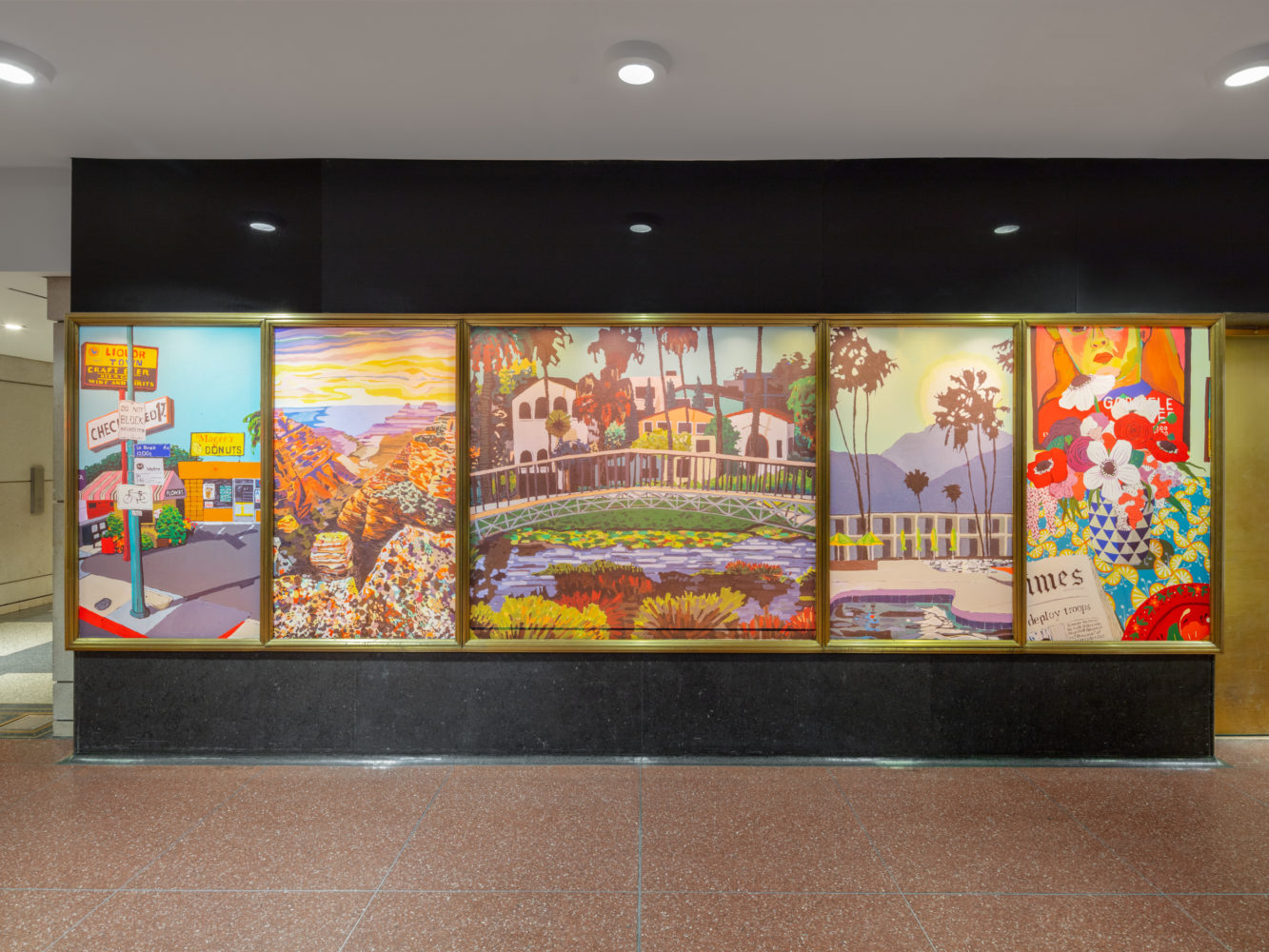 Hilary Pecis for “Art in Focus,” photo by Olympia Shannon, courtesy of Art Production Fund.
Hilary Pecis for “Art in Focus,” photo by Olympia Shannon, courtesy of Art Production Fund.
WHITEWALL: What was the starting point for the works included in your edition of “Art in Focus”?
HILARY PECIS: I wanted to use images for the murals of both domestic and outdoor spaces. These are the two typologies that I tend to work in, so I had a lot of material to work with. Along with the murals, I included three new paintings set within an installation in each of the three vitrines.
WW: What sort of response do you expect from placing these intimate, homey scenes in a location as public as Rockefeller Center? What kind of dialogue do the two contrasting aesthetics (your work and the center) create when paired together?
HP: The murals at the Center are a blend of California landscapes and domestic still lifes. I hope that they invite the viewer to take a longer look, and hopefully inspire a little joy. The buildings and the center are stunning, and the images of the paintings are beautiful in a different way. I hope that the building provides structure to the murals, and the murals provide escape to visitors and viewers.
WW: In addition to the series of paintings, you’ve created several mixed-media installations using elements like fabric scraps. Can you tell us about the process of creating those?
HP: Yes! The three vitrines with new paintings are each made up of a still life painting hung on a colored background, which matches the background on the painting. Below the painting is a hand painted tablecloth that mimics the tablecloth in the painting. Vinyl cutouts of images from within the painting, mostly vessels and flowers, are adhered to the glass in the vitrine to create an atmosphere that mimics the painting.
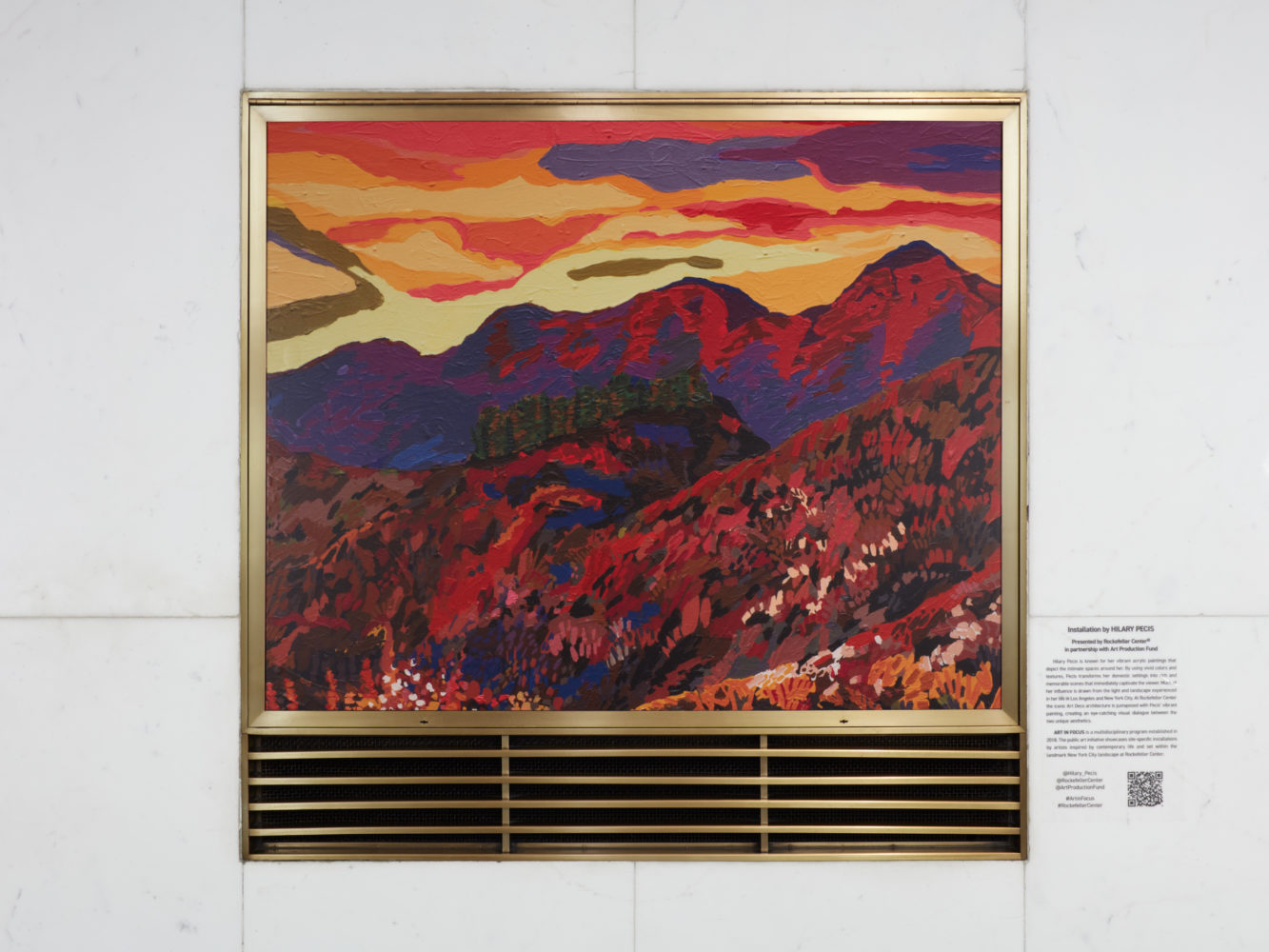 Hilary Pecis for “Art in Focus,” photo by Olympia Shannon, courtesy of Art Production Fund.
Hilary Pecis for “Art in Focus,” photo by Olympia Shannon, courtesy of Art Production Fund.
WW: You began painting these interior vignettes prior to the COVID-19 lockdown. How did this period of staying indoors and isolation influence your practice and subject matter?
HP: Prior to covid many of my paintings were made from photos I took of the spaces inhabited by others—usually friends. However, for obvious reasons I wasn’t spending time indoors anywhere aside from my own home, so most of my interiors were made from spaces in my own home or studio. There was the revisiting of old photos or reimagining spaces in my home.
WW: Your work doesn’t depict anything out of the ordinary, yet there’s a sense of everyday magic from the color and detail. What kind of feelings are you trying to capture or evoke in your work?
HP: When we spend a little extra time looking at the everyday objects around us, where it is the things we see inside or outside, the living and inanimate, things staged and those that move such as shadows and reflections, we notice the magic in all of those things. My attempt is to pick up on some of the nuances and elevate those things. I don’t always know if it works, but regardless there is a lot of attention and devotion in the process and I think that comes across.
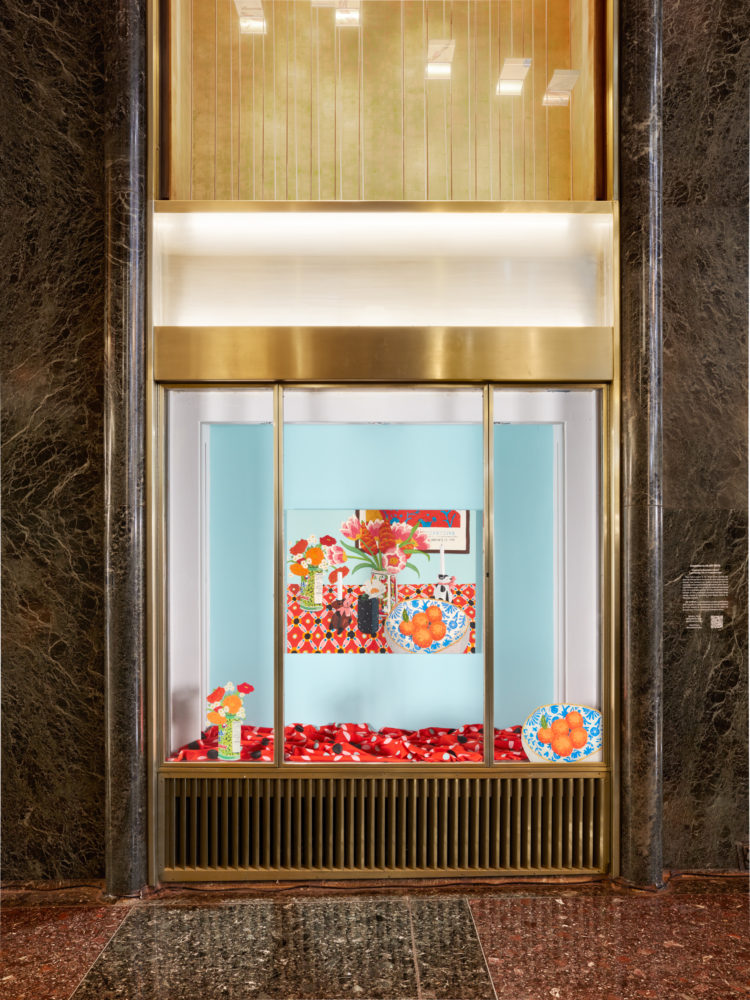 Hilary Pecis for “Art in Focus,” photo by Olympia Shannon, courtesy of Art Production Fund.
Hilary Pecis for “Art in Focus,” photo by Olympia Shannon, courtesy of Art Production Fund.
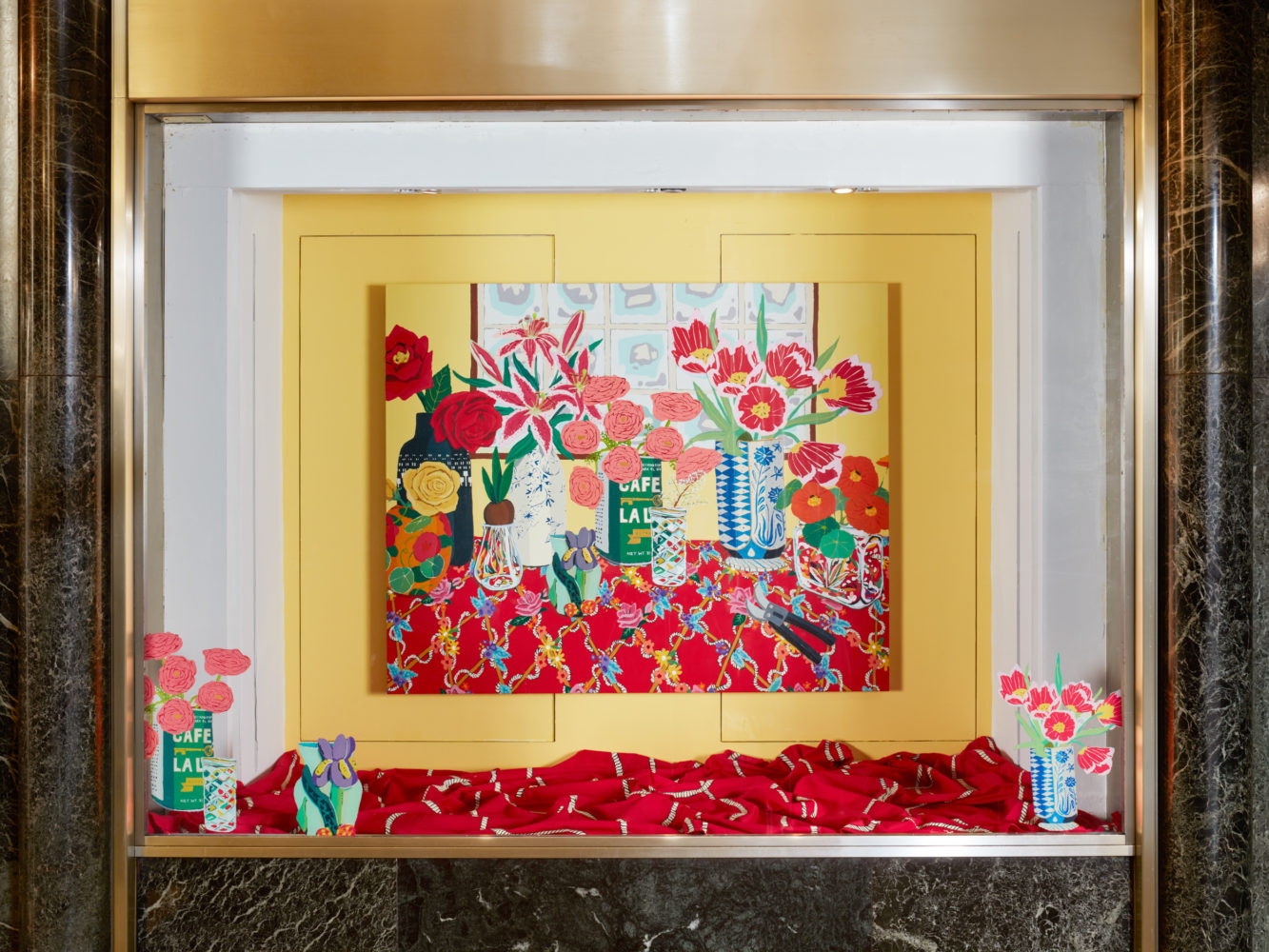 Hilary Pecis for “Art in Focus,” photo by Olympia Shannon, courtesy of Art Production Fund.
Hilary Pecis for “Art in Focus,” photo by Olympia Shannon, courtesy of Art Production Fund.
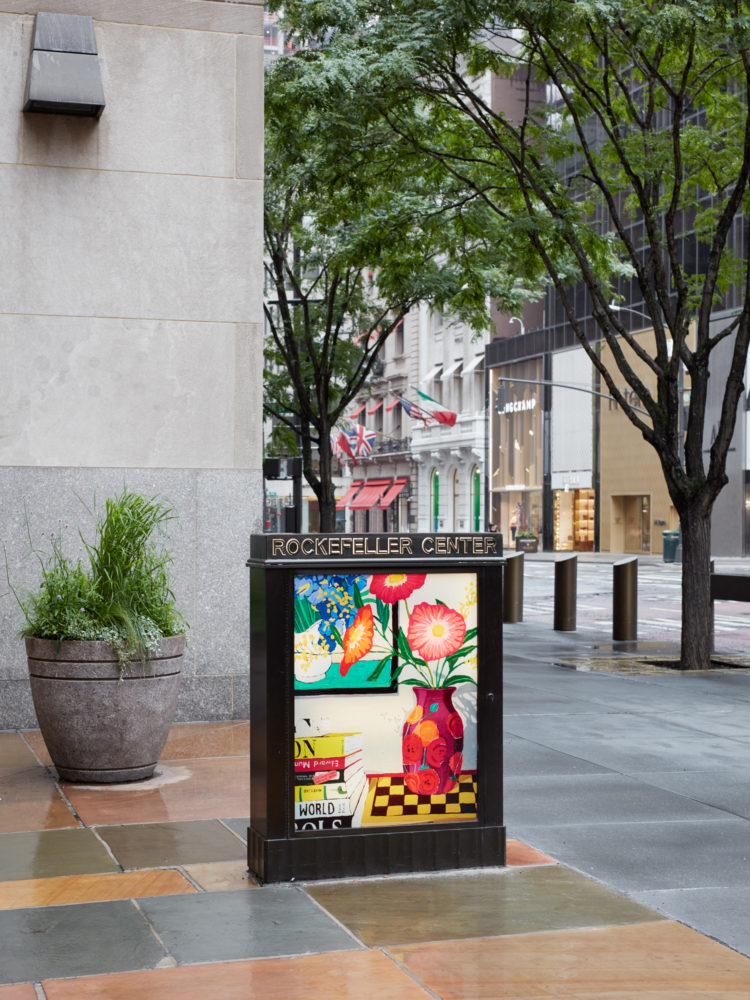 Hilary Pecis for “Art in Focus,” photo by Olympia Shannon, courtesy of Art Production Fund.
Hilary Pecis for “Art in Focus,” photo by Olympia Shannon, courtesy of Art Production Fund.







